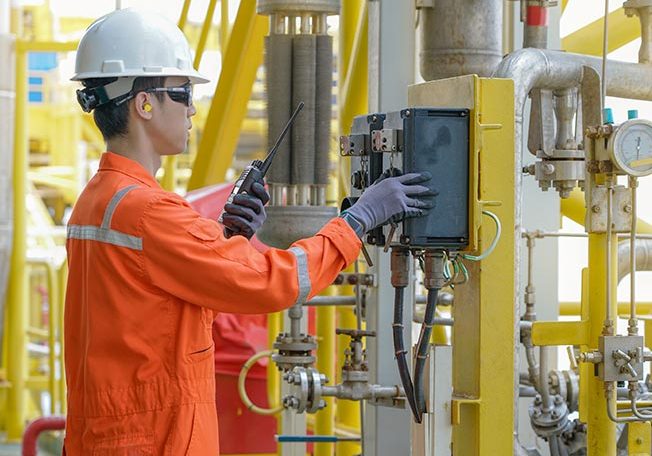In this article, we discussed offshore in oil and gas industry and IT services and communication solution for the industry
Offshore industry in oil and gas
“Offshore”, refers to operations undertaken at, or under the sea in association with an oil, natural gas or condensate field that is under the seabed, or to activities carried out in relation to such a field. Offshore is part of the upstream sector of the oil and gas industry.
Oilfield developers mostly rely on state-of-the-art satellite communication networks, fiber-optic and microwave networks, and cellular services to facilitate offshore navigation and communication.
The development of offshore oil and gas fields requires robust and reliable information technology (IT) and communication networks between onshore bases, and remote offshore facilities and infrastructure. Oil and gas IT services are therefore of vital importance to the ongoing success of organizations within the offshore sector.
READ: Offshore Safety Permit & New DPR OSP UPDATES
Offshore Technology has listed leading suppliers of connectivity and communications solutions for the offshore sector, based on its intel, insights and decades-long experience in the sector.
The list includes suppliers of offshore navigation solutions such as document control systems, digital health, safety and environment (HSE) solutions, underwater wireless modems, fiber-optic communication systems, asset lifecycle management software, energy simulation modelling software, logistics software, and augmented reality solutions.
Offshore navigation and communications solutions
The offshore sector uses satellite communication networks to transmit data over long distances. The communication networks typically include a very small aperture terminal (VSAT) at the offshore site, a satellite connection, and a teleport antenna at the onshore base.
Cellular and microwave networks, along with fiber-optic communication networks are used for point-to-point communication, data transfer, navigation and monitoring within the field between various components such as platforms, subsea trees, manifolds, and other equipment.
The communication networks and solutions should be able to withstand the extreme temperatures and pressures at offshore sites and be equipped with firewall and virus protection.
READ: THE ROLE OF TECHNOLOGY IN OIL AND GAS INDUSTRY
Some of the communication and navigation solutions used in the offshore sector are:
- VSAT systems
- Keyboard, video and mouse (KVM) extenders
- Switches, media converters and IP matrix solutions
- Closed-circuit television (CCTV) systems
- Radio repeaters and testers
- Communication simulators
- Digital muster stations
- Underwater wireless modems, and
- Offshore navigation equipment such as global positioning systems, monitors, and sensors
Document management systems in oil and gas IT services
Document management systems help to easily manage, store and access the necessary documents related to regulations, policies, procedures and production reports.
Document management systems also offer easy access to project planning and development documents and help to analyze production data and support asset life cycle management.
Uses of modelling software
Modelling software including energy simulation modelling software is used for:
- Reservoir modelling and simulation
- 3D graphical models of offshore oil and gas fields
- Offshore platforms and infrastructure design, and
- Subsea simulation

